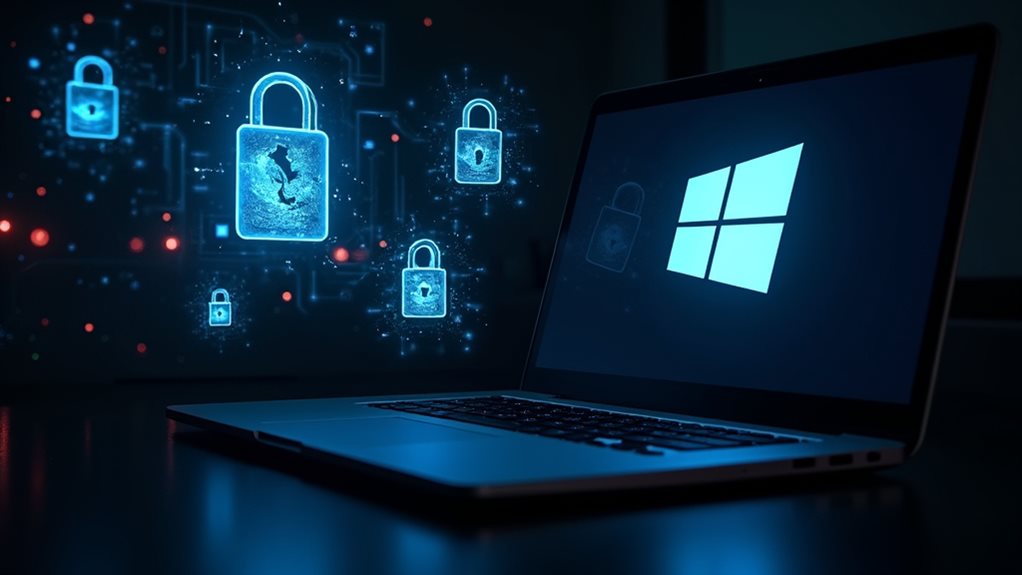Cyber threats against Microsoft accounts have entered a new era. Attackers now bypass even the most rigorous Multi-Factor Authentication (MFA) systems. With token theft and session hijacking on the rise, users are left exposed. As AI improves tactics, traditional security measures crumble. Over 600 million identity attacks occur daily, raising the stakes for everyone. Vigilance has never been more critical—are you prepared for the next wave of threats? There’s much more to uncover here.

How secure is your Microsoft login, really? As cyber threats evolve, the deceptive tactics used to exploit Microsoft accounts are becoming more sophisticated than ever. In an environment where attackers can bypass even the most rigorous Multi-Factor Authentication (MFA) protocols, the question looms larger than ever—just how safe are users?
Token theft and session hijacking have surged alarmingly, with attackers stealing authentication tokens right from browsers and memory, rendering MFA almost useless in certain scenarios. Once these tokens are snatched, the perpetrators gain prolonged access to accounts without raising any alarm. It’s like slipping into someone’s home through a back door and enjoying the comforts of their life undetected.
Token theft and session hijacking compromise MFA, enabling attackers to infiltrate accounts undetected, much like a silent intruder.
The issues don’t stop there; token reuse allows for seamless impersonation, giving cybercriminals the power to feast on sensitive Microsoft 365 data, almost as if they were the account owner themselves. Imagine malicious actors registering rogue apps in Azure Active Directory (AD) under the radar. Cybercriminals are exploiting OAuth extensively, compelling unsuspecting users to unwittingly grant massive permissions to these rogue apps.
One could argue that the traditional password-based security mechanisms are crumbling under this new attack style, making it a wild west of online vulnerabilities. In fact, malicious actors employ social engineering tactics that could trick even the most astute employees into granting access they would never voluntarily provide.
Business Email Compromise (BEC) has taken a turn for the worse—welcome to BEC 2.0. With AI-generated emails and real-time reconnaissance, the level of sophistication is staggering. Compromised internal accounts make spear phishing nearly unstoppable by bypassing spam filters, therefore targeting Microsoft 365 users with surgical precision.
Encouragingly fast and increasingly hard to detect, these attacks necessitate advanced detection mechanisms and dedicated user training. Identity-based attacks have been reported to be on the rise, exacerbated by the alarming surge in password spraying, where attackers target poorly secured accounts to break into networks. The stakes are high, with over 600 million identity attacks occurring daily and a recent report highlighted an 11% increase in reported vulnerabilities from the previous record in 2024.
Even state-backed groups are getting in on the action, contributing to the growing urgency for multifactor authentication across all platforms involved. Meanwhile, Microsoft is pushing forward with initiatives to implement passwordless solutions and bolster MFA capabilities, making these protections not only mandatory on critical portals but likewise user-friendly.
But innovation doesn’t stop there. Advanced threat detection methods are being adopted as Microsoft integrates over 200 new signatures into its defensive systems. Though the sophistication of attacks is rising, so too is Microsoft’s commitment to countering them. As the online environment morphs, these developments will be pivotal.
In an age where your online identity can be as fleeting as a Wi-Fi connection, vigilance is your best defence. How secure is your Microsoft login today? Staying informed, proactive, and willing to adapt is vital in outsmarting cybercriminals who seem to flourish in the face of complacency.
Final Thoughts
As cybercriminals adapt their tactics, the threats to Microsoft logins become increasingly sophisticated, posing risks to both personal and corporate data. It’s essential for users to equip themselves with knowledge and implement advanced security measures, such as multifactor authentication and vigilant monitoring. The Emotional Computer team is here to help you strengthen your digital defenses and safeguard your information. Don’t wait—fortify your security today! Click on our “Contact Us” page to get in touch and enhance your cybersecurity strategy.

